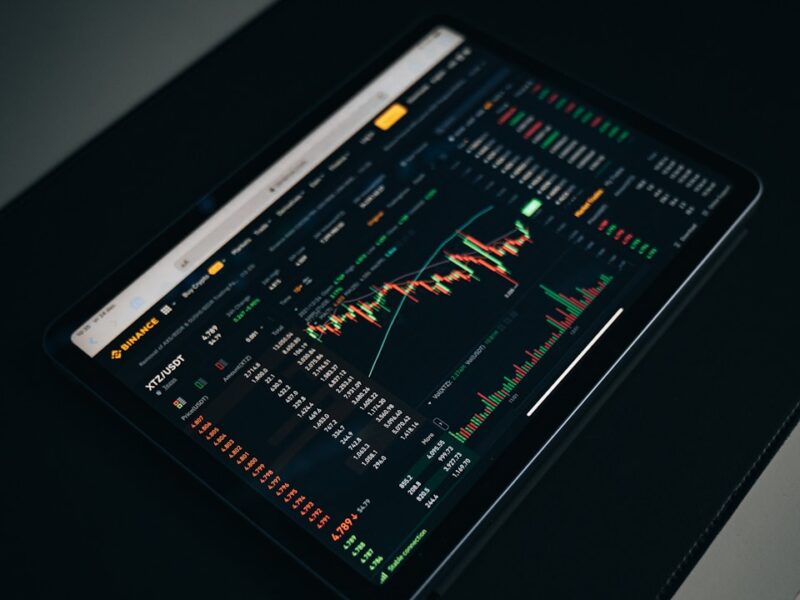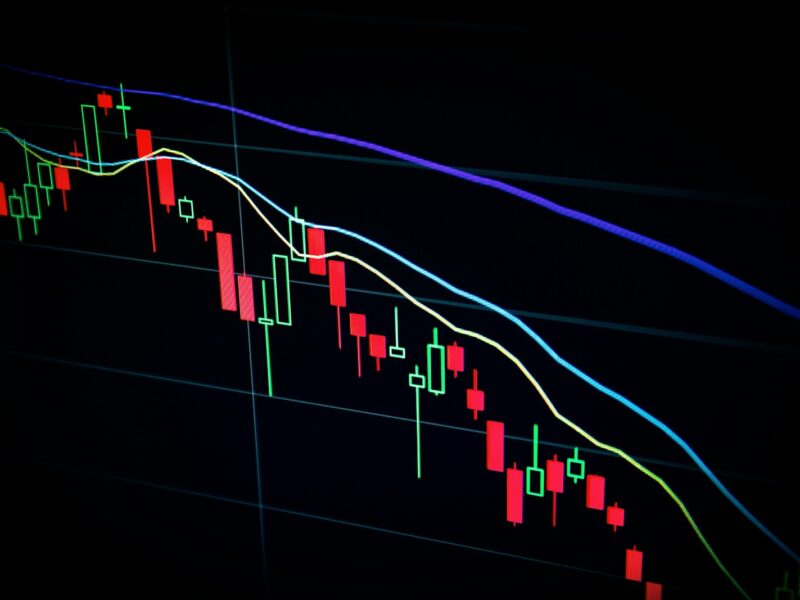What is Price Action Trading?
Price action is changes in a stock’s price over time. Price action traders look at these changes and try to find patterns which will predict the future price of a particular security’s price in the immediate future. They use the most current, recent information possible, rather than “lagging indicators,” or information about the stock which comes from historical data. This article examines the basics of price action trading and highlights the best books to further refine your price action trading skills.
How does Price Action Trading work?
Price action trading can be seen as a simplistic approach to trading, as it ignores a lot of the deeper analysis done by value investors or other technical traders. In other words, price action trading doesn’t care about the company’s likelihood of future success, or why people are buying a stock. They only care that people are buying the stock now (making the price increase) and about the stock’s recent price history.
Using the price graph of the stock over the recent past, a price action trader tries to decide how likely it is that the current price trend will continue. This strategy can work with any market, and virtually every type of investment. It also requires little in terms of starting software. Price action trading doesn’t require extensive software or knowledge of specific companies, and it’s much faster than other methods. All you need is the price data.
As with any strategy that relies on making “educated guesses” about the future, price action trading carries an element of risk. Price action trading is also generally better for short term investments, as it relies on short-term movements in stock price which are unlikely to stay consistent over longer time periods. Despite its apparent simplicity, price action trading requires significant familiarity with how markets work. It can be difficult to know where to start when learning price action trading, or a new strategy.
Thankfully, there are people who have gone before and not only learned how price action trading works, but wrote about their experiences for others to benefit. Here’s our quick guide to some of the best books written by individuals who have studied hard and are willing to share what they learned with both beginner and seasoned traders alike.
Price Action Breakdown
Author Laurentiu Damir started out trading as a hobby before making a career out of it, and now trades professionally. Damir takes the opportunity to dive deeper into price action trading in this book, explaining approaches that can be used for trading in any major financial market. Damir provides an exclusive strategy, which he claims will add “great value” to your trading.
Damir encourages readers to think about price movements in terms of supply and demand. He goes into great detail about value areas, and dives into how to use value areas to learn more about what is really going on. This book is directed more towards individuals who recognize it takes hard work and patience to see results. Analytical traders, as opposed to those who are looking to automate the process, are more likely to find his approaches helpful.
It’s worth noting Damir’s first language is not English, so there are some grammatical errors in the book as he has worked hard to present his ideas in a non-native language. If you’re able to look past this, there is a great deal of valuable information to be learned.
Trading Price Action Trends: Technical Analysis of Price Charts Bar
Al Brooks argues that the key to success as a trader requires staying power and the right trading strategy. As an author, Brooks has taken responsibility for sharing the strategies he has found to work for himself. The book focuses on trend trading and uses 5-minute candle charts to illustrate his ideas and points throughout the book.
Brooks is writing with the serious trader in mind, and like Damir, reiterates the importance of patience and hard work required to develop a successful strategy. Similarly, this book is not for the faint of heart and will take some time and dedication to make it through.
Trading Price Action Reversals
This book focuses on breaking down the strategy the author has developed over decades as a trader. It specifically focuses on a challenge in price action trading: sudden reversals or changes in price direction.
Brooks provides commentary and action steps for handling volatility and sharp reversals, as well as how to both recognize and benefit from trend reversals. He also goes over multiple types of reversals and how to both distinguish and choose from them, as well as how to use this knowledge to profit.
Again, the author did not write an entry level book for those considering dabbling in trading as a hobby. This is an extremely detailed, high level analysis for individuals who are serious about trading and have some experience under their belts.
Understanding Price Action
Author Bob Volman, a relatively well-known trader, wrote this book to be for both those who are interested in trading and those who have been doing it for decades. While the book is not an easy read by any means, the material is straightforward and easy to follow.
He describes it as a reference manual, a book designed to not just be read once but to be digested slowly and repeatedly over time. Volman does impart significant and valuable knowledge to his readers. The real selling point is the few hundred charts which come with it.
Volman’s book is approachable but deep and is useful for developing a trading discipline. It is comprehensive, and accessible without being too basic. There isn’t a lot of new information or unique strategies you can’t find anywhere else, but it’s still a thorough introduction and reference text for beginning and established traders.
Forex Price Action Scalping: An In-Depth Look
The author writes this book specifically for people who are interested in pursuing trading professionally and are just starting to get their feet wet. This book is an extremely detailed look at professional scalping and also dives into the psychological aspects that go into this field.
Scalping is a popular short-term strategy for trading. The goal of scalping is to profit off small price movements as opposed to larger ones. Those who choose this strategy must be able to make split-second decisions and be extremely disciplined in their work, following price movements down to the second. For those interested in this strategy, Volman offers high quality information.
Like his other book, Volman presents both information from personal experience and real-life stories to illustrate his points and more technical commentary. He also includes a number of helpful illustrations and charts. Though it may be targeted towards those interested in getting involved with trading, it can also be a helpful read for those who have been trading for years.
Price Action Market Traps
Ray Wang wrote this book to help readers understand “traps” in price action trading. “Traps” are common patterns which can trick traders into assuming that the market is moving one direction, when it’s actually about to break a resistance level or behave in an unexpected way due to market forces and investing psychology.
Many investors may have heard the terms “bull trap” or “bear trap” to refer to situations such as these. Wang looks at seven different trap setups that can be found on charts, describing how to identify each of these situations to help readers navigate this low risk, potentially high reward concept.
Overall, this is a well-focused book with plenty of valuable information. If you can get past some grammatical issues, this book is easy to digest and understand. This is a valuable resource for individuals who are interested in starting to trade, for those who may be struggling with their current trading strategies, or who just want to be aware of more potential patterns in the market.
Which book is right for you?
Individuals who are maybe just interested in trading, or who are still pretty new at it, should start with Bob Volman and Ray Wang’s books. These two authors focus more on individuals who still have a lot to learn and are trying to develop their own disciplines and strategies.
If you feel somewhat confident in your trading career or abilities, Brooks’ and Damir’s books might be more appropriate. These two authors dive a bit deeper and assume you have the knowledge and skills to wade through somewhat more complicated material and content.
None of these books are designed to be a quick, simple read. Each one should be read carefully and attentively to get the most out of the concepts and strategies the author is presenting. Trading is a complex world, with many different strategies and concepts to choose from.
Price action trading can be an accessible approach to use public information to make educated stock buying and selling decisions, predicting what could happen without being too concerned with why it is happening. Learning about price action trading means beginning to make trading decisions based on actual movement of prices on a chart in order to make decisions based off the most current information available.
While it can be complex to develop the best approach for yourself, authors such as Damir, Brooks, Volman, and Wang have written books designed to generously share their experience and knowledge for those who are still learning how to develop their own best trading strategies.


